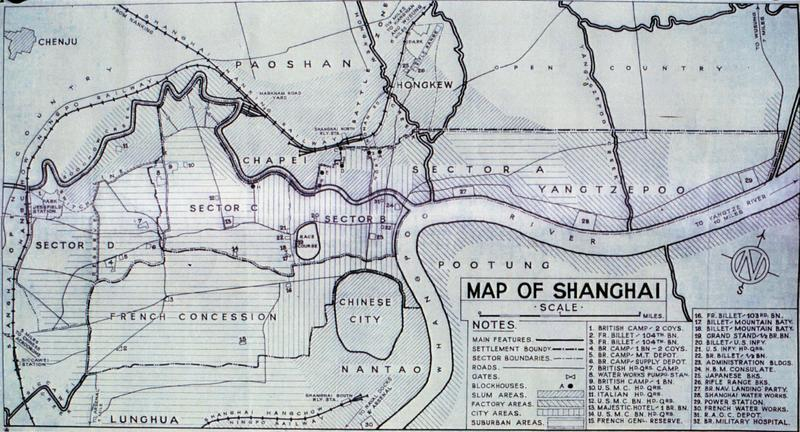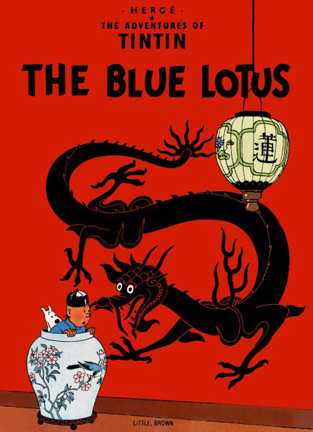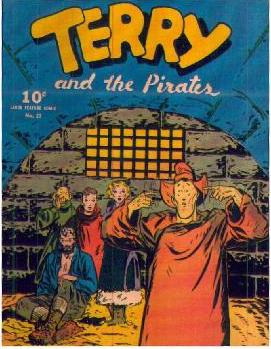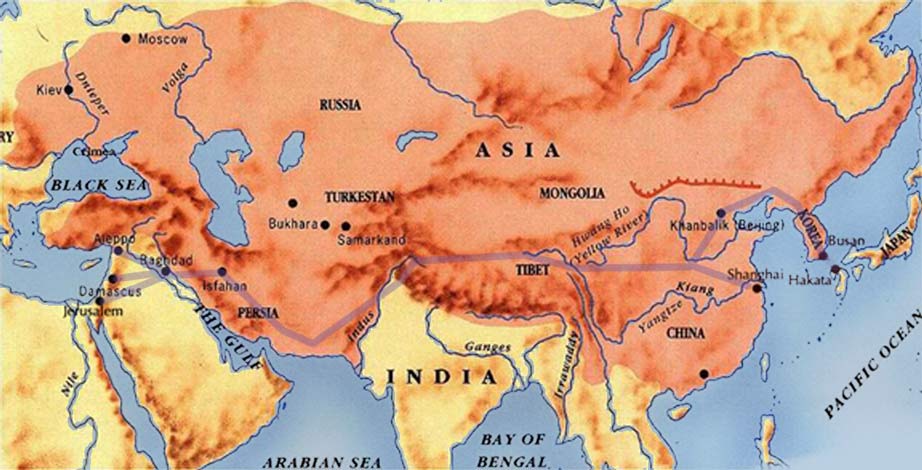Stephenson:Neal:Cryptonomicon:1:Shanghai (Alan Sinder)
From the Quicksilver Metaweb.
... no changes ... no changes ... no changes ... no changes ... no changes ... no changes ... no changes ... no changes ... no changes ... no changes ... no changes ... Thanks!!! Links: yellow pages main : business yellowpages - [HTTP://www.dirare.com business yellowpages] : [international directory|http://www.dirare.com] - [international directory|HTTP://www.dirare.com] : http://www.dirare.com/India/ : [companies of the world] : [| YP national] : "global directory" http://www.dirare.com : [http://www.dirare.com|online directory] Cryptonomicon's page on Shanghai linked to HEAP
Stephensonia
What do you get when you have Marines, prostitutes, spies, Tintin, Terry and the Pirates, The Fugu Plan, and Jews? I guess every schoolboy was clued in to China's importance. Comics had more weight with the public. Note that Lawrence thinks in terms of Superman and Ally Oop*. Shanghai takes center stage in The Diamond Age:
A thete visits a mod parlor;
noteworthy features of modern armaments.
The bells of St. Mark's were ringing changes up on the mountain when Bud skated over to the mod parlor to upgrade his skull gun. Bud had a nice new pair of blades with a top speed of anywhere from a hundred to a hundred and fifty kilometers, depending on how fat you were and whether or not you wore aero. Bud liked wearing skin-tight leather, to show off his muscles. On a previous visit to the mod parlor, two years ago, he had paid to have a bunch of 'sites implanted in his muscles little critters; too small to see or feel, that twitched Bud's muscle fibers electrically according to a program that was supposed to maximize bulk. Combined with the testosterone pump embedded in his forearm, it was like working out in a gym night and day, except you didn't have to actually do anything and you never got sweaty. The only drawback was that all the little twitches made him kind of tense and jerky. He'd gotten used to it, but it still made him a little hinky on those skates, especially when he was doing a hundred clicks an hour through a crowded street. But few people hassled Bud, even when he knocked them down in the street, and after today no one would hassle him ever again. Bud had walked away, improbably unscratched, from his last job decoy- with something like a thousand yuks in his pocket. He'd spent a third of it on new clothes, mostly black leather, another third of it on the blades, and was about to spend the last third at the mod parlor. You could get skull guns a lot cheaper, of course, but that would mean going over the Causeway to Shanghai and getting a back-alley job from some Coaster, and probably a nice bone infection in with the bargain, and he'd probably pick your pocket while he had you theezed. Besides, you could only get into a Shanghai if you were virgin. To cross the Causeway when you were already packing a skull gun, like Bud, you had to bribe the shit out of numerous Shanghai cops. There was no reason to economize here. Bud had a rich and boundless career ahead of him, vaulting up a hierarchy of extremely dangerous drug-related occupations for which decoy served as a paid audition of sorts. A start weapons system was a wise investment. ...
Source Victoria; description of its environs.
Source Victoria's air intakes erupted from the summit of the Royal Ecological Conservatory like a spray of hundred-meter-long calla lilies. Below, the analogy was perfected by an inverted tree of rootlike plumbing that spread fractally through the diamondoid bedrock of New Chusan, terminating in the warm water of the South China Sea as numberless capillaries arranged in a belt around the smartcoral reef, several dozen meters beneath the surface. One big huge pipe gulping up seawater would have done roughly the same thing, just as the lilies could have been replaced by one howling maw, birds and litter whacking into a bloody grid somewhere before they could gum up the works. But it wouldn't have been ecological. The geotects of Imperial Tectonics would not have known an ecosystem if they'd been living in the middle of one. But they did know that ecosystems were especially tiresome when they got fubared, so they protected the environment with the same implacable, plodding, green-visored mentality that they applied to designing overpasses and culverts. Thus, water seeped into Source Victoria through microtubes, much the same way it seeped into a beach, and air wafted into it silently down the artfully skewed exponential horns of those thrusting calla lilies, each horn a point in parameter space not awfully far from some central ideal. They were strong enough to withstand typhoons but flexible enough to rustle in a breeze. Birds, wandering inside, sensed a gradient in the air, pulling them down into night, and simply chose to fly out. They didn't even get scared enough to shit. The lilies sprouted from a stadium-sized cut-crystal vase, the Diamond Palace, which was open to the public. Tourists, aerobicizing pensioners, and ranks of uniformed schoolchildren marched through it year in and year out, peering through walls of glass (actually solid diamond, which was cheaper) at various phases of the molecular disassembly line that was Source Victoria. Dirty air and dirty water came in and pooled in tanks. Next to each tank was another tank containing slightly cleaner air or cleaner water. Repeat several dozen times. The tanks at the end were filled with perfectly clean nitrogen gas and perfectly clean water. The line of tanks was referred to as a cascade, a rather abstract bit of engineer's whimsy lost on the tourists who did not see anything snapshot-worthy there. All the action took place in the walls separating the tanks, which were not really walls but nearly infinite grids of submicroscopic wheels, ever-rotating and many-spoked. Each spoke grabbed a nitrogen or water molecule on the dirty side and released it after spinning around to the clean side. Things that weren't nitrogen or water didn't get grabbed, hence didn't make it through. There were also wheels for grabbing handy trace elements like carbon, sulfur, and phosphorus; these were passed along smaller, parallel cascades until they were also perfectly pure. The immaculate molecules wound up in reservoirs. Some of them got combined with others to make simple but handy molecular widgets. In the end, all of them were funneled into a bundle of molecular conveyor belts known as the Feed, of which Source Victoria, and the other half-dozen Sources of Atlantis/Shanghai, were the fountainheads. ...*
Authored entries
- Daniel Waterhouse (Alan Sinder)
- Stephenson:Neal:Cryptonomicon:2:Fourth Marines (Alan Sinder)
- Stephenson:Neal:Cryptonomicon:29:His mother's people ...(drank)
- Stephenson:Neal:Cryptonomicon:30:the real Philippines. Randy pays no attention to it (Alan Sinder)
- Stephenson:Neal:Quicksilver:21:granted all men - even Jews - the right to worship (Alan Sinder)
- Stephenson:Neal:Quicksilver:99:end of days (Alan Sinder)
- Stephenson:Neal:Quicksilver:93:The Plague Year (Alan Sinder)
- Stephenson:Neal:Quicksilver:83:Translated into the Analytical language...(Alan Sinder)
- Stephenson:Neal:The Confusion:3:curiously modified (Alan Sinder)
- Stephenson:Neal:The Confusion:8:Moseh de la Cruz (Alan Sinder)
Shanghai

Jewish refugees in Shaghai:
Great Uncle Frank and son
Gary at Shanghai's Winter Garden
The role of Shanghai changed radically in the 19th century, as the city's strategic position at the mouth of the Yangtze River made it an ideal location for trade with the West.
During the First Opium War in the early-19th Century, British forces plundered Shanghai. The war ended with the 1842 Treaty of Nanjing, which saw the treaty ports, Shanghai included, opened for international trade. The Treaty of the Bogue signed in 1843, and the Sino-American Treaty of Wangsia signed in 1844 together saw foreign nations achieve extraterritoriality on Chinese soil.
The Taiping Rebellion broke out in 1850, and in 1853 Shanghai was occupied by a triad offshoot of the rebels, called the Small Swords Society. The fighting destroyed the countryside but left the foreigners' settlements untouched, and Chinese arrived seeking refuge. Although previously Chinese were forbidden to live in foreign settlements, 1854 saw new regulations drawn up making land available to Chinese. Land prices rose substantially. The year also saw the first annual meeting of the Shanghai Municipal Council, substantiated in order to manage the foreign settlements. In 1863, the British and American settlements joined in order to form the International Settlement.
The Sino-Japanese War fought 1894 - 95 over control of Korea concluded with the Treaty of Shimonoseki, which saw Japan emerge as an additional foreign power in Shanghai. Japan built the first factories in Shanghai, which were soon copied by other foreign powers to effect the emergence of Shanghai industry. During World War II, Shanghai was a centre for refugees from Europe. She was the only city in the world that was open unconditionally to the Jews at the time.
Shanghai International Settlement
Established in 1854, the Shanghai Municipal Council (literally "Works Department") was the governing body which administered the combined British and American concessions in Shanghai, known as the Shanghai International Settlement. Wholly foreign-controlled, the council was staffed by individuals of all nationalities, including Britons, Americans, New Zealanders, Australians, Danes and Japanese. Chinese members were not permitted to join the council until 1928.
Representing a wide spectrum of nations, the Shanghai Municipal Council along with the foreign residents of the International Settlement recreated the architecture and institutions of their homelands in Shanghai. It maintained its own police force, and even possessed its own military reserve the Shanghai Volunteer Corps. The immense presence of the council and the settlement's foreign residents can still be seen throughout present day Shanghai, most notably on The Bund.
Among the many members who served on the council, its American chairman during the 1920's, Stirling Fessenden, is most well-known and remembered. In addition to serving as the settlement's main administrator during Shanghai's most turbulent era, he was also remembered for being more British than the council's British members. Unlike its neighbour, the French Concession, the International Settlement was not a formal British possession and exercised a considerable degree of political autonomy, not always wisely. Actions in the 1920s in particular, such as the May 30th 1925 shooting of Chinese demonstrators by members of the Shanghai Municipal Police, embarrassed and threated Britain's position in China.
Over the years a large number of Chinese took up residency at the International Settlement, either to escape wars, or to seek better economic opportunities. In 1932 there were already 1,040,780 Chinese living within the International Settlement, with another 400,000 cramping into the area after the Second Sino-Japanese War broke out in 1937. Indeed, Shanghai was at the time the only place in the world that unconditionally offered refuge for Jews who were escaping from the Nazis.
The Council was formally abolished twice. In July 1943 it was retroceded to the City Government of Shanghai, then in the hands of the pro-Japanese Wang Jingwei government, by its then Japanese leaders on the Council. Anglo-American influence had effectively ended after 8th December 1941, when Japanese troops entered and occupied the city. Although senior Allied personnel and councillors were removed from their posts, most Allied nationals working for the administration remained in their jobs until they were interned after February 1943. The Settlement was also returned to Chinese control in the Sino-British Friendship Treaty of February 1943 between Britain and the legitimate National Government of China. After the war a Liquidation Commission fitfully met to discuss the remaining details of the handover. The Council's headquarters building still stands in downtown Shanghai.

Map of Shanghai, 1933

What the above Map of Shanghai is based on.
Shanghai was then the biggest financial city in the Far East. Under the Republic of China, Shanghai was made a special city in 1927, and a municipality in May 1930. Shanghai was occupied by Japan in 1937 until its surrender in 1945.
The 28th of November 1941
November 28, 1941 is the day U.S. Marines left Shanghai, the era of the China Marines ended, as the last of the regiment set sail for the Philippines.
Why Shanghai invokes Tintin

Tintin Became Political
With This Adventure
The Blue Lotus (originally Le Lotus Bleu) is a comic strip album in the Tintin series by Hergé. It is the second half of a story, the first half being told in Cigars of the Pharaoh. The Blue Lotus is generally considered to be a pivotal work in Hergé's carreer.
Synopsis
Warning: Plot details follow.
In Cigars of the Pharaoh, Tintin chases an international group of drug distributors through the Middle and Far East. He manages to catch them all, except for the leader, who crashes in a ravine. In order to unravel more of the network and stop the opium production at the source, he travels to China, where he is eagerly awaited by the assassins of the opium consortium.
The title, Blue Lotus, refers to the name of an opium den.
Method change
Up to the writing of The Blue Lotus, Hergé's writing was mainly based on popular prejudice and on what his mentor, the abbot Norbert Wallez, had told him. Tintin was published in a newspaper, and Hergé announced at the end of Cigars that his next setting would be China.
Father Gosset, the chaplain to the Chinese students at the University of Louvain, wrote to Hergé urging him to be sensitive about what he wrote about China. Hergé agreed, and in the spring of 1934 Gosset introduced him to Chang Chong-chen, a young sculpture student at the Brussels Académie des Beaux-Arts. The two young artists quickly became close friends, and Chang introduced Hergé to Chinese history, culture, and the techniques of Chinese art.
As a result of this experience, Hergé would strive in The Blue Lotus, and in subsequent Tintin adventures, to be meticulously accurate in depicting the places which Tintin visited. He reached this meticulousness by painstakingly researching all his topics. When his UK publisher complained that The Black Island depicted an old-fashioned England, Hergé sent Bob de Moor a longtime collaborator of Hergé's across the North-Sea to redraw anything that was no longer accurate, resulting in huge changes to the album. This new-found accuratesse would become a Hergé trade mark.
As a token of appreciation, he added a fictional "Chang" to The Blue Lotus , a young Chinese boy who meets and befriends Tintin. Hergé mocks his own naïveté deep inside the album, when he tries to let Tintin explain to Chang that Chang's fear for the 'white devils' is based on prejudice. He then recites a few Western stereotypes of the Chinese.
Political turmoil
As another result of his friendship with Chang, Hergé became increasing aware of the problems of colonialism, in particular the Japanese Empire's advances into China. The Blue Lotus carries a bold anti-imperialist message, contrary to the prevailing view in the West, which was sympathetic to Japan and the colonial enterprise.
Tintin is a direct witness to the South Manchurian railroad incident (Mukden incident), Japan's excuse to attack and occupy China and start the second Sino-Japanese War (1937-1945).
As a result, it drew sharp criticism from various parties, including a protest by Japanese diplomats to the Belgian Foreign Ministry. However, the passage of time has since vindicated Hergé's views.
The other side, China, in particular Taiwan, was so pleased with the album, that they invited Hergé for a visit.
Oddly enough, according to Tintin's Ideology, the People's Republic of China forbade the publication of the album for a long time. When it finally allowed publication in 1984, some pictures of the examples of Western prejudice were either altered or even taken out completely.
Terry and the Pirates

Issue 23 of Terry and the Pirates
Adventure looms with Connie, Terry Lee,
Normandie Drake, Pat Ryan and Big Stoop*
Terry and the Pirates*** was an action-adventure comic strip created by cartoonist Milton Caniff in the tradition of Little Nemo in Slumberland in that there was a running storyline, unlike most modern comic strips. The daily strip began October 22, 1934, while the Sunday color pages started appearing on December 9 1934. The story-lines were different at the beginning, but then, starting on August 26, 1936 daily strips and Sunday pages merged into one single story-line.
The story opens with young Terry Lee and his grown-up sidekick, Pat Ryan, arriving in China in search of a mine that had belonged to Terry's grandfather. In the second day's strip, they meet George Webster Confucius, who, under the name "Connie", signs on as their interpreter and native guide, completing their adventuring company. After dealing with Poppy Joe, a squatter who has claimed the mine as his own, they go on to have a myriad of varied adventures in the wide-open Far East.
As Terry grew up, he had less need of Pat but more interest in the fascinating women who have always populated Caniff's work. Normandie Drake, April Kane, Burma and of course, the Dragon Lady. The Dragon Lady was alive with contradictions. Wily, scheming, and commanding a shadowy army of smugglers and assassins, she ruthlessly pursued treasure, but she often showed her more humane side at the least suspected moments. A truly formidable opponent for Terry and his companions, and often their only chance of survival! One of comics' all-time greatest female villains, she was capable not only of seducing, humiliating, or attempting to murder them; But also once, to help him overcome a case of pre-date jitters, she taught Terry how to dance. Raquel Welch performed as this complex villain in a homage to this scene in a TV special for the comic strips in the 1970s.
Caniff had a contract dispute with his syndicate and left in 1946; his last Terry strip was published on December 29. He went on to create Steve Canyon, another continuing, action-adventure strip that Caniff ran until 1988, year of his death. After Caniff left, George Wunder carried Terry and the Pirates for twenty-seven more years until 1973.
In 1953, Canada Dry offered a "premium giveaway" (freebie) with a case of its ginger ale one minibook in a trilogy series of Terry and the Pirates strips printed by Harvey Comics. Later incarnations of Caniff's beloved work included a television series and a radio show.
The Fugu Plan
If the Japanese treatment of Jews seems odd know that an American Jew helped with financing their war against Russia in 1905. In 1919, White Russians introduced the Japanese to the book, "The Protocols of the Elders of Zion." The Japanese called their plan for Jewish settlement "The Fugu Plan." "Fugu" is highly poisonous blowfish. After the toxin-containing organs are painstakingly removed, it is used as a food in Japan, and is considered an exquisite delicacy. If it is not prepared carefully, however, its poison can kill a person. Ten thousand displaced people were relocated to Shanghai during its implementation with two thousand Jews housed in the Kansai region. What the Japanese didn't know was there were already Jews in Shanghai who traveled the Silk Road 25 to 15 centuries earlier. There was a thriving community in Kobe of Japanese Jews. Today, only one member of the clan seems active.

Route Nomad Jewish Traders Took East
Sugihara's Story
Chiune (Sempo) Sugihara was an unassuming hero. During World War II, over a period of weeks, he saved thousands of refugees from otherwise certain death under the Nazis. He did this on his own, without hesitation or fanfare, and with no expectation of thanks or even recognition. He did it because he was a man of principle and peace who could not stand by while others perished.
The seeds of Sugihara's heroism were sown far from Japan when, in 1933, the Nazis established the first concentration camp, Dachau, as a detention center for political prisoners, Communists, Socialists, Social Democrats, and trade unionists. They also persecuted authors and artists whose works they considered subversive or who were Jewish, as well as gypsies, Poles and other Slavs, intellectuals, high-level Soviet state and Communist Party officials, Catholic priests and any Christian church leaders who opposed Nazism, Jehovah's Witnesses, the mentally and physically handicapped, male homosexuals and individuals accused of "asocial" or criminal behavior.
In early August of 1940, a representative of the Jewish Agency Palestine Office in Lithuania approached Sugihara and asked him to grant Japanese transit visas to Polish Jewish refugees stranded in Kovno. Under the plan the refugees would travel to the Dutch-controlled island of Curacao in the Caribbean, where no entry permit was necessary, by way of the USSR and Japan. The Soviets had made their approval of the plan conditional on the refugees obtaining transit visas from Japan.
Sugihara requested permission from his government to participate in this rescue plan. Though the Japanese government rejected the proposal, Sugihara decided to grant such visas to any Jewish refugees who requested them. In doing so, Sugihara saved thousands of Jews in just a few weeks, including many rabbinical students from the famed Mir academy. By the time Sugihara left Lithuania he had issued visas to 2,140 persons. These visas also covered some 300 others, mostly children.
After the Soviet authorities removed all foreign consulates, Sugihara was reassigned to Prague in Bohemia and then to Bucharest, Romania, Germany's ally, where he remained until after the end of the war. During the victorious Soviet army's march though the Balkans in 1944; the Soviets arrested Sugihara together with other diplomats from enemy nations. They held him and his family, under fairly benign conditions, for the next three years. When Sugihara returned to Japan in 1947, he was asked to submit his resignation for his actions against Japanese policy and the Foreign Ministry retired him with a small pension. Sugihara held a variety of jobs after the war including one for a Japanese trading company in Moscow from 1960 to 1975.
A year before he died in 1986, Yad Vashem, the Holocaust Martyrs' and Heroes' Remembrance Authority in Jerusalem, Israel, honored Sugihara with the title "Righteous Among the Nations" for his aid to the refugees in Lithuania during World War II. There is an exhibit honoring Sugihara at Washington's Holocaust Museum, which serves as a research facility for scholars, teachers, students and visitors who want to learn more about the history of the Holocaust.
Related entries

Tintin and Snowy
* Avi Halaby
* Judaism
* Islamic revolution
* Jack Shaftoe
* Daniel Waterhouse
* Isaac Newton
* Noah's Ark
* Albert Einstein
* Lens
* Julian calendar
* Richard Feynman
* Goto Dengo
* Gabriel Goto
* God
* Ethics
* Talk:Islamic revolution
External links
- The Panay Incident
- Men of the China Marines
- Pete George
- Milt Caniff's Biography (Creator of Terry and the Pirates)
- Official Site of the Hergé Foundation
- The Cult of Tintin at Tintinologist.org - an English language Tintin fan site
Read
ISBN 083480350X, The Fugu Plan: The Untold Story of the Japanese and the Jews During World War II, Marvin Tokayer and Mary Swartz, Publisher: Weatherhill; (April 1, 1996) ISBN 031635856, The Blue Lotus (The Adventures of Tintin) by Herge, Publisher: Little, Brown; 1st American ed edition (July 30, 1984) ISBN 0918348072, Terry and the Pirates, Milton Caniff, Publisher: NBM Pub Co; (October 1, 1984)